《英语词汇学引论》
| 作者 | 林承璋编著 编者 |
|---|---|
| 出版 | 武汉:武汉大学出版社 |
| 参考页数 | 396 |
| 出版时间 | 1987(求助前请核对) 目录预览 |
| ISBN号 | 7307023601 — 求助条款 |
| PDF编号 | 87535608(仅供预览,未存储实际文件) |
| 求助格式 | 扫描PDF(若分多册发行,每次仅能受理1册) |
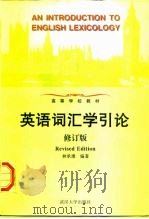
Chapter 1 Language,Linguistics and Lexicology1
1-1-1:A Definition of Language1
ContentS1
1-1-2:Language,Society and Thought2
1-2-1:A Definition of Linguistics4
1-2-2:The Scope of Linguistics5
1-3-1:What Is Lexicology?5
1-3-2:Aims and Significance of the Course of English Lexicology5
2.With grammar7
3.With stylistics7
1.With phonetics7
1-3-3:The Connection of Lexicology With Other Branches of Linguistics7
4.With historical linguistics8
1-3-4:Two Approaches to the Study of English Lexicology8
Chapter 2 The Sources of the English Vocabulary11
2-1-1:TheEnglish People and the English Language11
2-1-2:The Position and Character of the English Language in the Indo-European Family11
2-1-3:The Divisions of the History of the English Language12
2-1-4:Some Characteristics of Old English13
2-1-5:Some Characteristics of Middle English15
2-1-6:Some Characteristics of Modern English17
2-2-1:Wordsof Native Origin21
1.The polysemic character of native words in English21
2.The collocability of native words in English22
3.Word-forming ability of native words in Modern English23
2-2-2:Borrowed Words in the English Vocabulary23
1.Causes and means of borrowings into English24
3.Elevationof meaning(Amelioration) (125
2.Four groups of loan-words25
2-3-2:The Scandinavian Element inthe English Vocabulary27
2-3-1:The Foreign Elements in the English Vocabulary27
2-3-3:The French Element in the English Vocabulary30
1.French loan-words in the Middle English period31
2.French loan-words after the Middle English period33
1.The zero period of Latin influence34
Vocabulary34
2-3-4:The Latin Element in the English34
2.The first period of Latin influence35
4.The third period of Latin influence36
3.The secondperiod of Latin influence36
5.The fourthperiod of Latin influence37
2-3-5:The Greek Element in the English Vocabulary38
1.Words relating to literature38
2.Words relating to linguistics38
3.Words relating to natural sciences38
4.Words relating to socialsciences38
5.Words relating to medicine38
1.The preciseness of meaning of the classical elements39
2-3-6:The Influence of the Classical Elements upon the English Vocabulary39
2.The richness of the classical elements in the English vocabulary40
3.The cosmopolitan character of the classical elements41
2-3-7:Other Foreign Elements in the English Vocabulary41
2-3-8:Interrelation betweenthe Native and Foreign Elements in the English Vocabulary43
Chapter 3 Word Meaningand Semantic Relations46
3-1-1:Some General Remarks on Semantics46
and Meaning46
3-1-2:The Relationship between Meaning andtheObject49
3-2-1:What Is a Word?50
1.Phonetic motivation52
3-2-2:Meaningand Motivation52
2.Grammatical motivation53
3.Motivationby meaning53
3-3-1:Classifications of Words54
1.According to the lexical meaning and grammatical function of words54
2.According to the usage of words54
3.According to the character of words56
4.According to motivation56
5.According to polysemy and monosemy57
6.According to the origin57
2.Lexical meaning58
3.Contextual meaning58
1.Grammatical meaning58
3-3-2:Main Types of Word Meaning58
4.Denotative meaning59
5.Connotative meaning59
6.Stylistic meaning59
3-3-3:Word Meaning and Context62
3-4-1:Synonyms66
1.What are synonyms?66
2.The source of synonyms66
3.The significance of studying synonyms69
4.Absolute synonyms and relative69
synonyms69
2.Types of antonyms73
3-4-2:Antonyms73
1.What are antonyms?73
3.Different antonyms of one word76
4.Use of antonyms77
3-4-3:Polysemy and Homonymy79
1.The definition of polysemy79
2.Two main processes of sense-shift79
3.The definition of homonymy and homonyms82
4.The classification of homonyms82
5.Three ways of forming homonyms86
1.The definition of neologisms89
Chapter 4 The Changing English Vocabulary89
4-1-1:Neologisms89
3.The sources of new words90
2.The rate of changes of the English vocabulary90
4.The formation of neologisms104
4-1-2:Archaisms110
1.The definition of archaisms110
2.The reasons for the disappearance of words110
3.Obsolete words may be still used at the present time111
4-2-1:Changes in Meaning115
1.Historical causes115
4.Linguistic causes116
3.Psychological causes116
2.Social causes116
4-2-2:FourTendencies in Semantic Changes117
1.Extension of meaning(Generalization)117
2.Narrowing of meaning(Specialization)122
4.Degradation of meaning(Deterioration)126
4-2-3:Semantic Changes from the Literal Use of Words to Their Figurative Use129
1.Metaphor129
2.Metonymy139
3.Synecdoche144
4.Euphemism145
Chapter 5 Word-formation in English150
5-1-1:Introduction150
1.Morphological structure and classification of words150
2.Two types of morphemes151
3.Three types of words152
4.Root,base,stem153
5-2-1:The Main Processes of English Word-formation161
1.Prefixation162
2.Suffixation204
3.Conversion235
4.Compounding252
5-2-2:The Minor Processes of English Word-formation269
1.Clipping or shortening269
2.Acronyms272
3.Blending276
4.Back-formation278
5.Forming new words by analogy280
6.Onomatopoeia281
Chapter 6 English Idioms284
6-1-1:The Definition of Idioms284
6-1-2:The Significance of Studying English Idioms285
6-1-3:The Features of English Idioms286
1.Idioms used in colloquial style290
6-1-4:English Idioms in Different Styles290
2.Idioms used in any situation291
3.Idioms used in formal situations292
4.Idioms used as slang292
6-1-5:The Difference between Idiomatic and Free Phrases293
6-2-1:Classification of English Idioms294
1.Idiomatic expressions with specific grammatical structures294
2.Phrases identified with the familiar parts of speech297
3.Idioms not correlative with a given308
grammatical part of speech308
4.Idioms expressing greeting,surprise,praise or criticism312
5.Proverbs313
6-2-2:English Idioms around Different Subjects316
1.Idioms containing names of birds and animals316
2.Idioms containing names of parts of the human body317
3.Idioms involving colors319
4.Idioms containing words related to clothes320
5.Idioms involving time321
6.Idioms involving flowers and plants322
7.Idioms containing words related to fruit323
8.Idioms containing words related to shapes and measures324
7-1-1:English as a Language of World-wide Use326
Chapter 7 British and American English326
7-1-2:British and American English328
7-1-3:The Historical Background of American English331
7-2-1:Differences between British English and American English333
7-2-2:Differences in Individual Sounds334
7-2-3:Differences in Stress336
7-2-4:Differences in Spelling337
7-2-5:Differences in Vocabulary339
7-2-6:Differences in Grammar351
7-3-1:Two Contrasting Word-lists355
7-3-2:British and American English in the Future370
8-1-1:What Isa Dictionary?371
Chapter 8 English Dictionaries and How to Use Them371
8-1-2:Characteristics of Dictionaries373
8-2-1:Types of Dictionaries374
8-2-2:Monolingual,Bilingual and Multilingual Dictionaries374
8-2-3:General and Special Dictionaries375
8-2-4:Pocket,Medium-sized and Unabridged Dictionaries376
8-2-5:Synchronic and Diachronic Dictionaries377
8-2-6:Encyclopedias and Encyclopedic Dictionaries378
8-3-1:The History of English Dictionaries379
8-3-2:Five Periods in the History of English Dictionaries382
8-4-1:How to Use English Dictionaries384
Bibliography392
1987《英语词汇学引论》由于是年代较久的资料都绝版了,几乎不可能购买到实物。如果大家为了学习确实需要,可向博主求助其电子版PDF文件(由林承璋编著 1987 武汉:武汉大学出版社 出版的版本) 。对合法合规的求助,我会当即受理并将下载地址发送给你。
高度相关资料
-
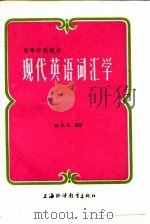
- 现代英语词汇学
- 1983 上海:上海外语教育出版社
-

- 现代英语词汇学概论
- 1986
-

- 大学英语词汇词典
- 南京航空航天大学
-
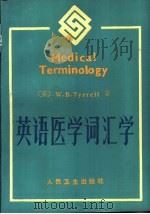
- 英语医学词汇学
- 1985 北京:人民卫生出版社
-
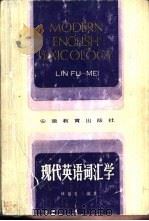
- 现代英语词汇学
- 1985 合肥:安徽教育出版社
-

- 汉语词汇学引论
- 1992 北京:商务印书馆
-

- 英语词汇学
- 1999 北京:外语教学与研究出版社
-
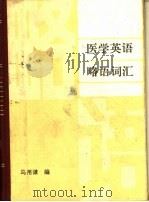
- 医学英语略语词汇
- 1983 北京:人民卫生出版社
-

- 大学英语词汇5400
- 1984 沈阳:辽宁科学技术出版社
-
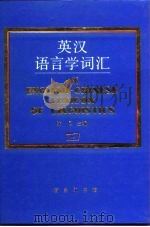
- 英汉语言学词汇
- 1998 北京:商务印书馆
-

- 英语词汇学引论
- 1987 武汉:武汉大学出版社
-
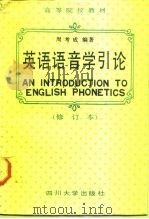
- 英语语音学引论
- 1990 成都:四川大学出版社
-
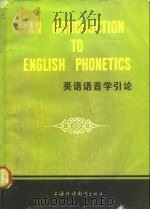
- 英语语音学引论
- 1984 上海:上海外语教育出版社
-

- 大学英语词汇
- 1986 武汉:华中师范大学出版社
提示:百度云已更名为百度网盘(百度盘),天翼云盘、微盘下载地址……暂未提供。➥ PDF文字可复制化或转WORD
